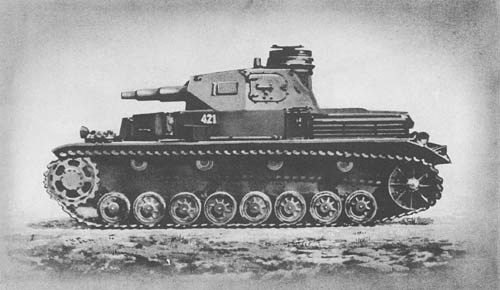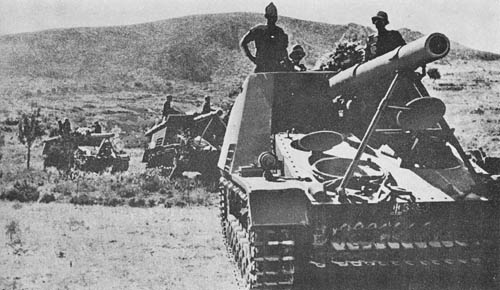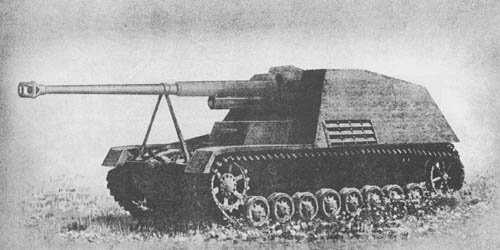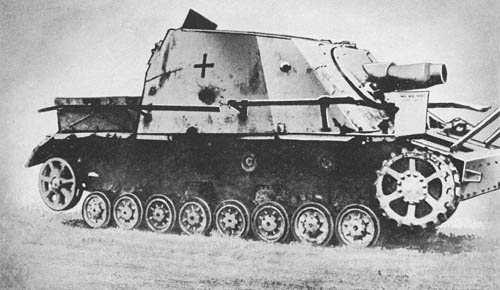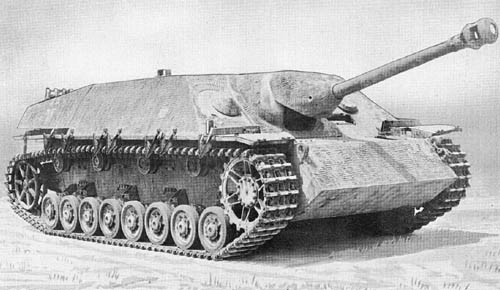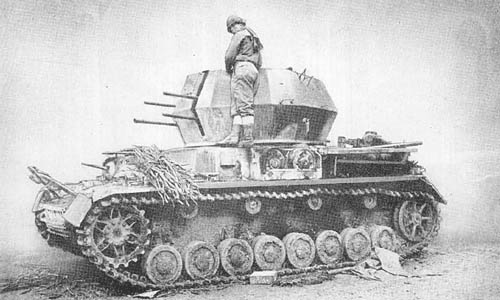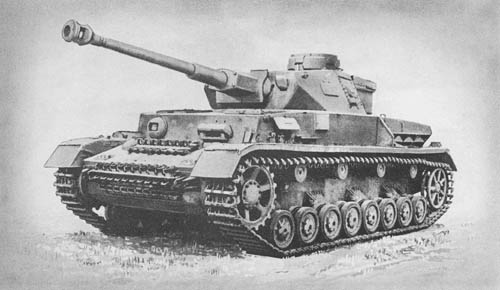
Model F—The hull, superstructure, and turret, as in all other known models of the Pz. Kpfw. IV, is of welded construction. The basic frontal armor, including superstructure and turret of Model F, was increased to 50 mm; on the sides to 30 mm. The main hull superstructure projects over the top of the tracks, providing additional stowage space and a wide base upon which to mount the turret. The turret floor is carried by brackets from the turret ring and consequently rotates with the turret.
The suspension consists of 4 bogie assemblies, each fitted with two rubber-tired bogie wheels 18 1/2 inches in diameter on each side, with a quarter elliptic spring anchored beneath the leading axle arm of each assembly. There is a front sprocket, the spokes of which are bent outward from the hub cap giving the outside a dished appearance, a rear idler which has 7 spokes instead of 8 as in previous models, and 4 return rollers.
The power plant consists of a Maybach HL 120 TRM, V-12 O.H.V., 4-stroke, gasoline engine, rated 320 B.H.P. at 3,000 r.p.m.
The armament consists of a 7.5 cm Kw. K., 24 cals. in length, a coaxial 7.92 mm MG 34 mounted in the turret, and a 7.92 mm MG 34 at the right of the front plate of the superstructure.
Model F2—Same as Model F except that it carried the initial experimental mounting of the Kw. K. 40, 43 cals. in length.
Model G—Produced in 1942. Same as Model F except that the mounting of the Kw. K. 40 was continued. The gun was fitted with a double baffle muzzle brake.
Models H, K—These models are referred to in German documents published during 1943.
SPECIFICATIONS
| Weight | 26 tons | |
| Length | 19 ft., 4 ins. | |
| Width | 9 ft., 7 ins. | |
| Height | 8 ft., 6 ins. | |
| Ground clearance | 15 ins. | |
| Tread centers | 7 ft., 11 ins. | |
| Ground contact | 11 ft., 6 ins. | |
| Width of track | 15 ins. | |
| Pitch of track | 4 3/4 ins. | |
| Track links | 98 | |
| Fording depth | 3 ft. | |
| Theoretical radius of action: | ||
| Roads | 130 miles | |
| Cross-country | 80 miles | |
| Speed: | ||
| Road | 28 m.p.h. | |
| Cross-country | 15 m.p.h. | |
| Armor: | ||
| Front plate | 50 mm | |
| Sides | 30 mm | |
| Armament | 7.5 cm Kw. K. 40 2 MG’s 34 |
|
| Ammunition | 7.5 cm gun—87 rds. MG’s—2,250 rds. |
|
| Engine | Maybach HL 120 TRM, 320 hp. | |
| Transmission | Synchromesh—6 speeds forward, 1 reverse. | |
| Steering | Epicyclic, clutch brake | |
| Crew | 5 |
German: p. 32
